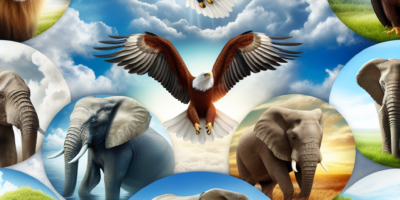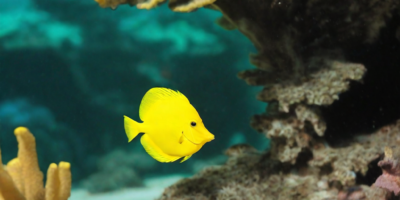Introduction
Whether you’re a budding naturalist or want to expand your animal kingdom knowledge, you’ve come to the right place! This extensive wildlife fact file compiles intriguing facts and vital statistics to educate and inspire. From tiny ants to tremendous elephants, brilliant birds to bizarre fish, we traverse the continents and oceans to spotlight captivating details about many species. Prepare to have your mind blown by the diversity of our planet’s wildlife and ecosystems contained within this rich fact file – your essential guide to the fauna that makes life on Earth incredible. Let’s jump right in!
Mammals – Our Fur-Bearing Kin
Mammals share some distinct traits, including warm blood, fur or hair, and milk-producing mothers nurturing live young. But within the class, mammal diversity astounds!
- Mammal on our planet.” the largest animal ever known to have existed, weighing up to 200 tonnes! Its heart is the size of a small car.
- Their wings are stretched skin between their fingers.
- Kangaroo rats never need to drink water, getting moisture solely from metabolic production and seeds. Their kidneys are so efficient their urine can be nearly solid!
- The echidna, along with the platypus, are rare egg-laying mammals. Their young hatch from eggs but then drink milk like other mammals.
- Elephants communicate via infrasonic rumbles and can detect these low-frequency calls from miles away via their feet and trunks.
Our fellow mammals display awe-inspiring diversity and adaptions!
Birds – Majestic Masters of the Skies
From hummingbirds to ostriches, birds are specially adapted for the skies with lightweight bones, fused arm bones forming wings, and feathered bodies and flight surfaces. Here are some fantastic avian facts:
- The ostrich is the most giant and fastest-running bird despite its inability to fly. Their huge eyes are more significant than their brains!
- Emperor penguins can withstand temperatures of -60°F (-51°C) by huddling together to conserve warmth.
- The Arctic tern makes the longest animal migration, flying over 40,000 miles (64,000 km) roundtrip between Arctic breeding grounds and Antarctic winter habitat each year!
- Parrots and corvids, like crows and ravens, possess incredible intelligence and cognition that are more similar to apes than other birds.
Our feathered friends never cease to dazzle with their beauty, speed, stamina, and intelligence!
Wildlife Habitat Council: As Good As It Sounds?
Reptiles – Scaly Survivors
Cold-blooded creatures uniquely adapted to their environments. They’re also superb survivors, having lived for over 300 million years!
- The Galápagos giant tortoise can live over 150 years, with some individuals known to survive past 200! Their necks and legs retract, giving their shells a turtle-like appearance.
- Komodo dragons are the most giant lizards with venomous bites that turn off prey. They eat carrion and sometimes attack pigs, deer, and even humans!
- Thanks to specially adapted toes, I was sprinting up to 5 feet (1.5 m) on the surface.
- Chameleons are renowned color changers, but many other lizards, like anoles and horned lizards, also blend with environments.
- Anacondas are semi-aquatic boa constrictors that can swallow prey whole thanks to expandable jaw ligaments. The largest recorded was over 27 feet (8.3 m) long!
Reptiles continue to astound with unique adaptations and evolutionary success!
Take a Deep Dive into the Fishy World
With over 34,000 species, fish demonstrates jaw-dropping diversity. From deep sea denizens to flashy freshwater fish, here are some piscine wonders:
- Electric eels generate up to 600 volts to stun prey and defend themselves.
- Seahorses are the only fish where males become pregnant, protecting fertilized eggs in a brood pouch, birthing the young, and releasing them.
- The Mekong giant catfish can reach 10 feet (3 m) long and 660 pounds (300 kg)! These critters are threatened by overfishing and damming of Mekong tributaries.
- Gulper eels have enormous mouths and can swallow prey much more significantly than themselves, thanks to expandable stomachs and hinged jaws.
Get ready to have your mind blown by the astonishing abilities and adaptions of the underwater world!
Marvels of the Invertebrates
While most known vertebrates like mammals, birds, reptiles, and fish, over 97% of species on Earth are invertebrates like insects, crustaceans, mollusks, and more. They may lack spines, but their superpowers astound:
- The mantis shrimp punches so fast that its club-like appendages vaporize water, creating cavitation bubbles that generate heat of 4,400°F (2,400°C) upon collapsing!
- Ants can lift 5,000 times their body weight, equivalent to a 150-pound (70kg) person hoisting 80 tons!
- The immortal jellyfish can revert to immature states, cheating death and achieving potential biological immortality.
- Some squids and octopuses, like the mimic octopus, can shape-shift their bodies, color, and texture to impersonate other species and deter predators.
- The hardy tardigrade, known as a “water bear,” can survive extremes of pressure, temperature, dehydration, and radiation that would prove fatal to almost all life. They’ve survived the vacuum of space!
Invertebrates may lack backbones but make up for it through super-adaptations!
Creatures of the Night: Nocturnal Wildlife
Roughly 30% of vertebrates and over 60% of invertebrates are nocturnal, being more active at night. These species display unique adaptions:
- Enlarged eyes like owls collect more light. The tapetum lucidum reflective tissue gives the eyes a visible glow.
- Sensitive whiskers (vibrissae) and large movable ears allow keen detection.
- Echolocation used by bats and toothed whales relies on sound rather than sight to orient and hunt.
- Metabolic and hormonal shifts allow reversed sleep cycles.
- Camouflage, mimicry, and silence help avoid daytime predators.
The fact file shows that for many creatures, the nighttime is prime time for hunting, foraging, and living life to the fullest!
Conclusion
I hope this wildlife fact file’s menagerie of eclectic and extraordinary species has expanded your knowledge and awe of the animal kingdom’s vast diversity. From enormous elephants to tiny tardigrades, evolution equips life for survival in astonishing ways. We’ve only scratched the surface of Earth’s 30 million-plus incredible species. Delving deeper reveals natural wonders more phenomenal than any fiction. Stay curious and keep exploring our planet’s boundless biodiversity!



